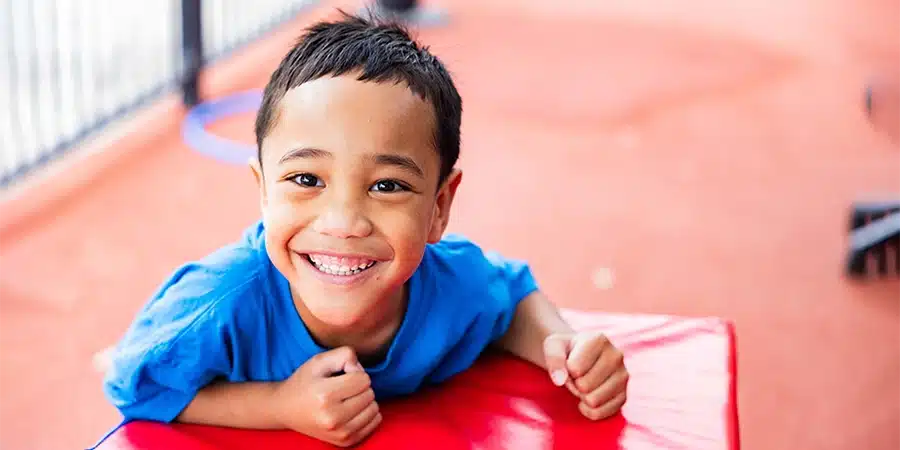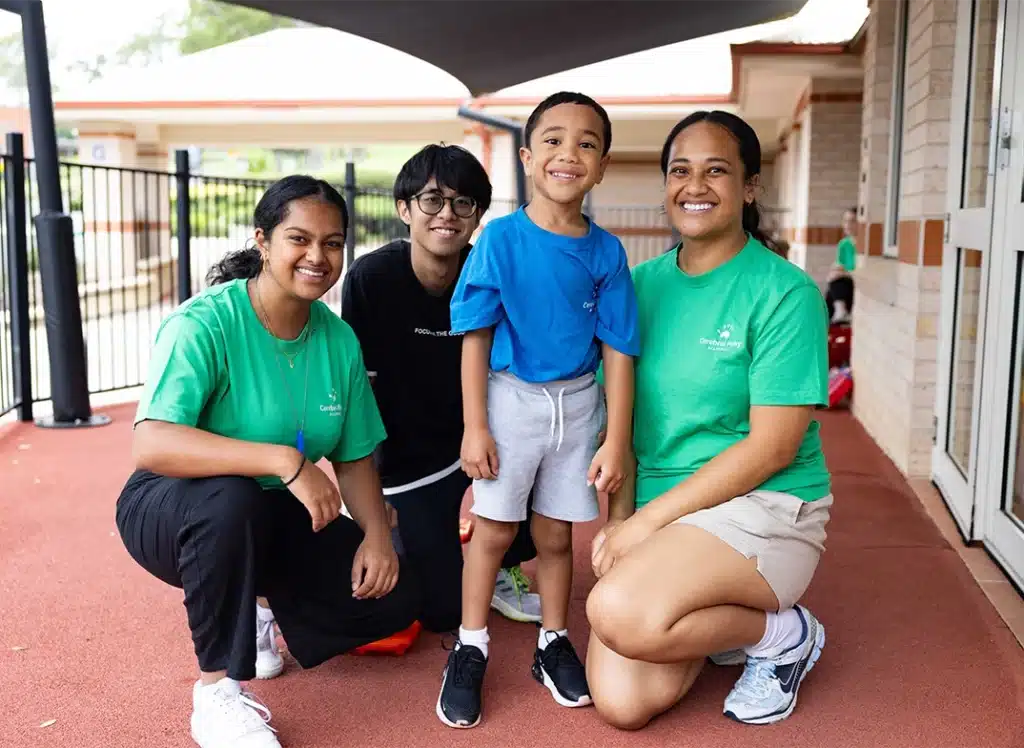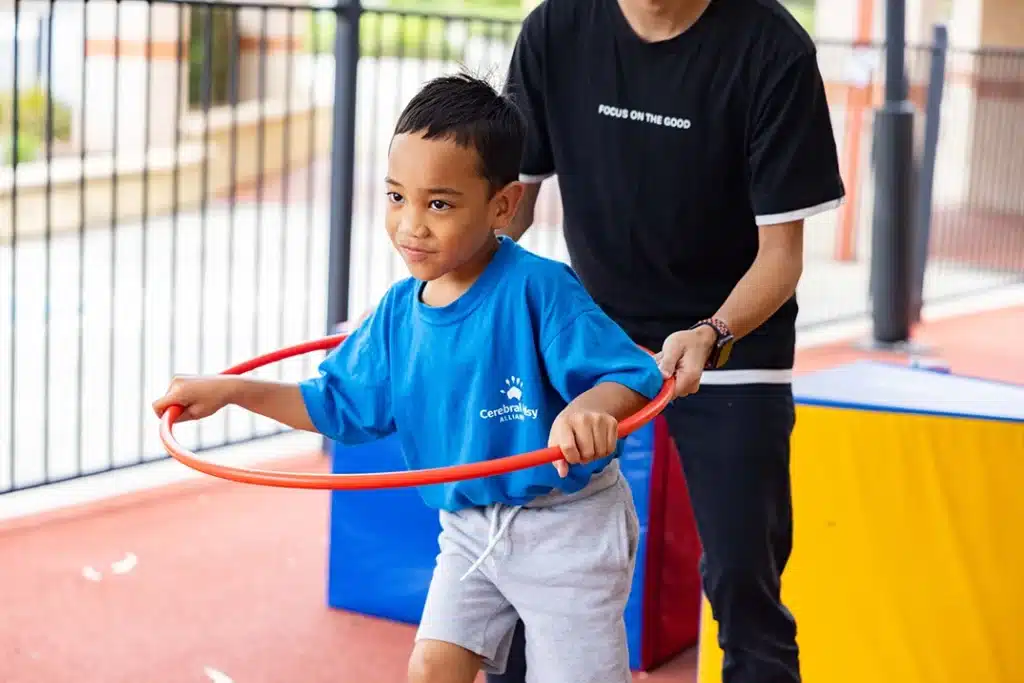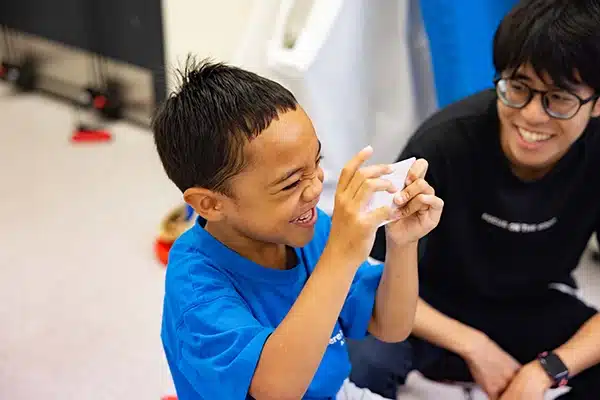

Noah is the youngest in his family, and he’s determined to keep up with his older brothers. Whether wrestling with them or playing basketball, he doesn’t let anything hold him back. If they can do it, he can do it too. His mother, Mona, describes him as someone who gives everything a go. “He doesn’t stop. He gives everything a go. If his big brothers can do it, he can do it. He wrestles with his brothers,” she says. His perseverance and willingness to try new things were evident throughout his participation in HABIT-ILE.

Before joining HABIT-ILE, there were things Noah had always wanted to do but couldn’t quite manage. He had a trampoline at home and desperately wanted to jump like his brothers, but he could only bounce on his knees. Running and kicking a ball were also challenges. During HABIT-ILE, he worked on these goals.

“Whatever we practice at HABIT-ILE, we practice at the park afterwards. He came in the next day and showed Sachini, his therapist, how he was kicking the ball at the park,” Mona shares.
Mona has been Noah’s primary support in his therapy journey, bringing him to sessions since he was just under two years old. She explains, Noah enjoyed the engaging format of the HABIT-ILE program with switching between goals—putting on socks, practicing new skills, and keeping things fresh.
Beyond the therapy itself, Mona has found a sense of connection at HABIT-ILE with other parents who understand what she’s going through, and Noah has formed friendships with other children who share similar experiences.
“It’s very inclusive here, and the parents are really nice too. We don’t have disability in our family, so this is my first experience of disability. Here, I can relate to other parents, and Noah can relate to the other children,” she says.
Noah’s whole family is involved in supporting his progress. His older brothers help him practice his skills outside of therapy, particularly with basketball and frame running. With the support of his family, therapists like Sachini, and new friends, Noah continues to work towards his goals.